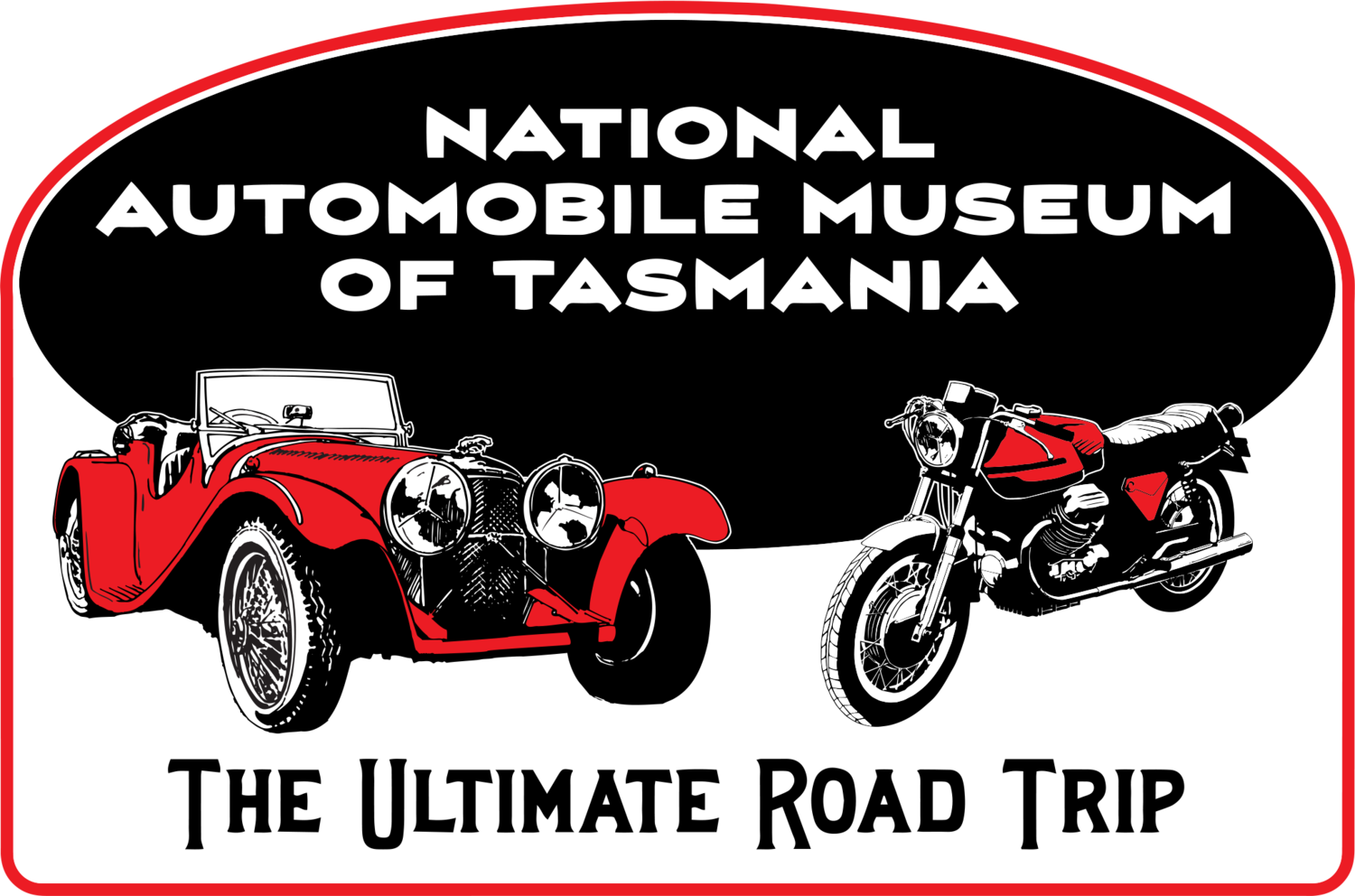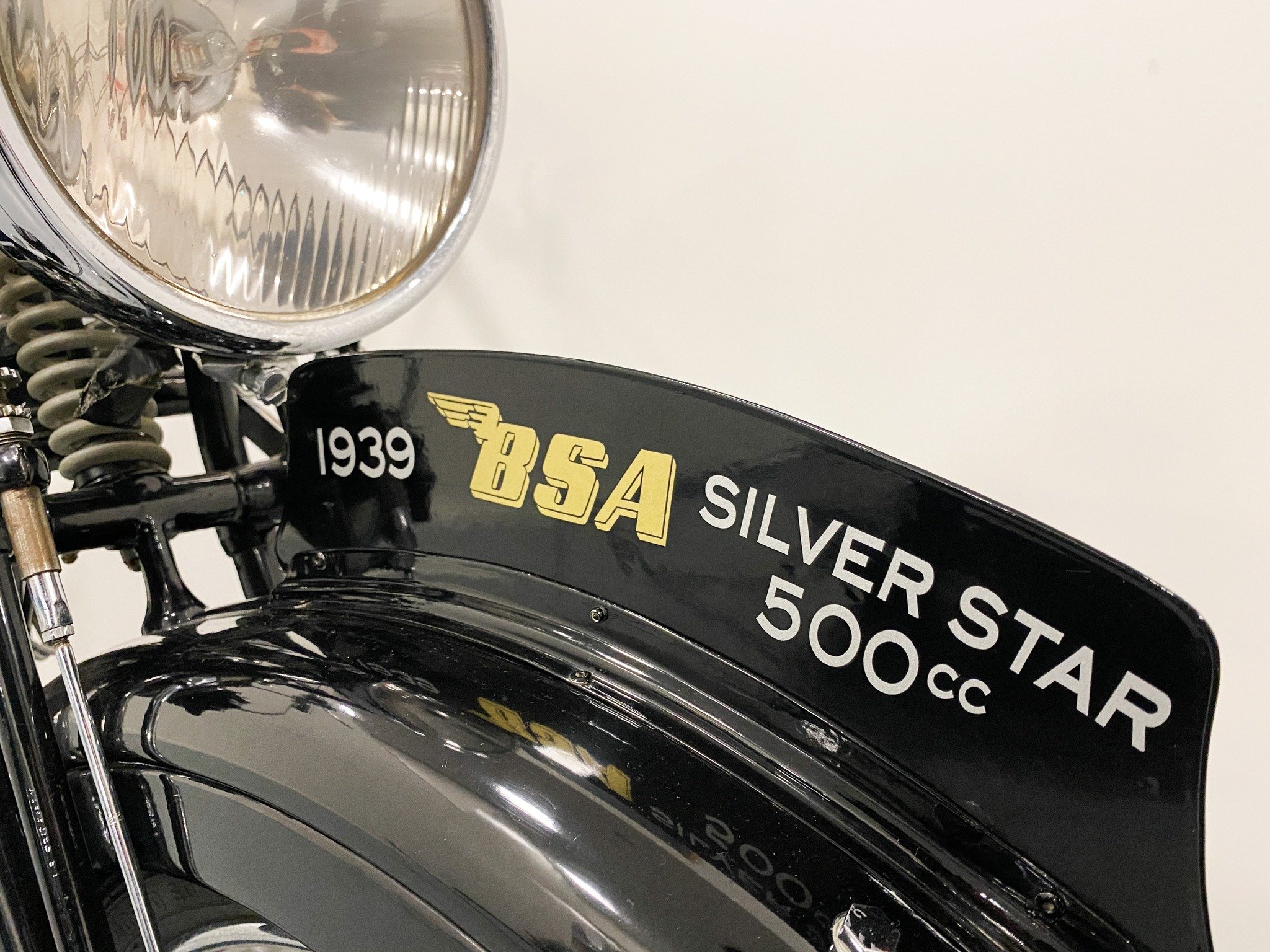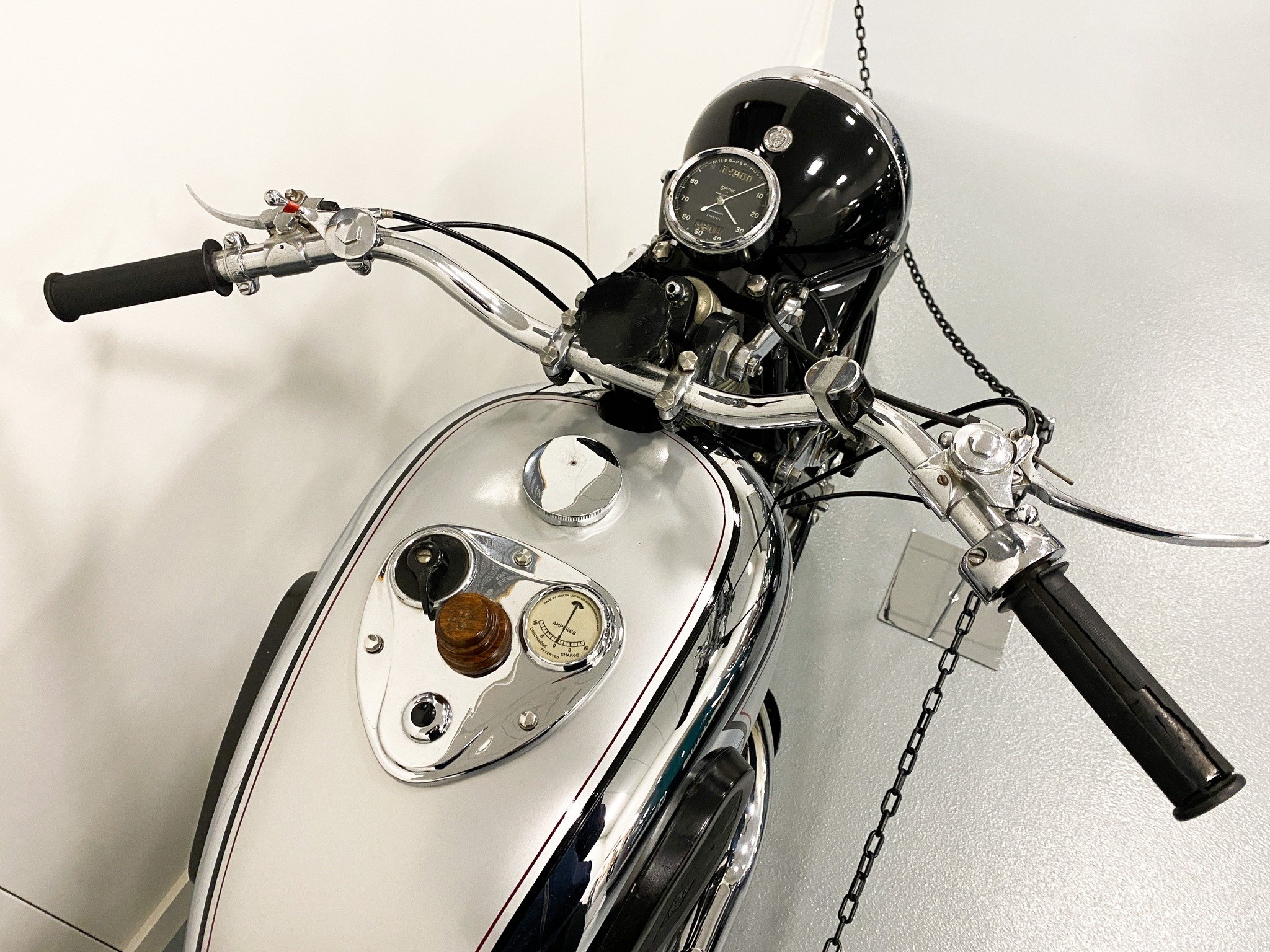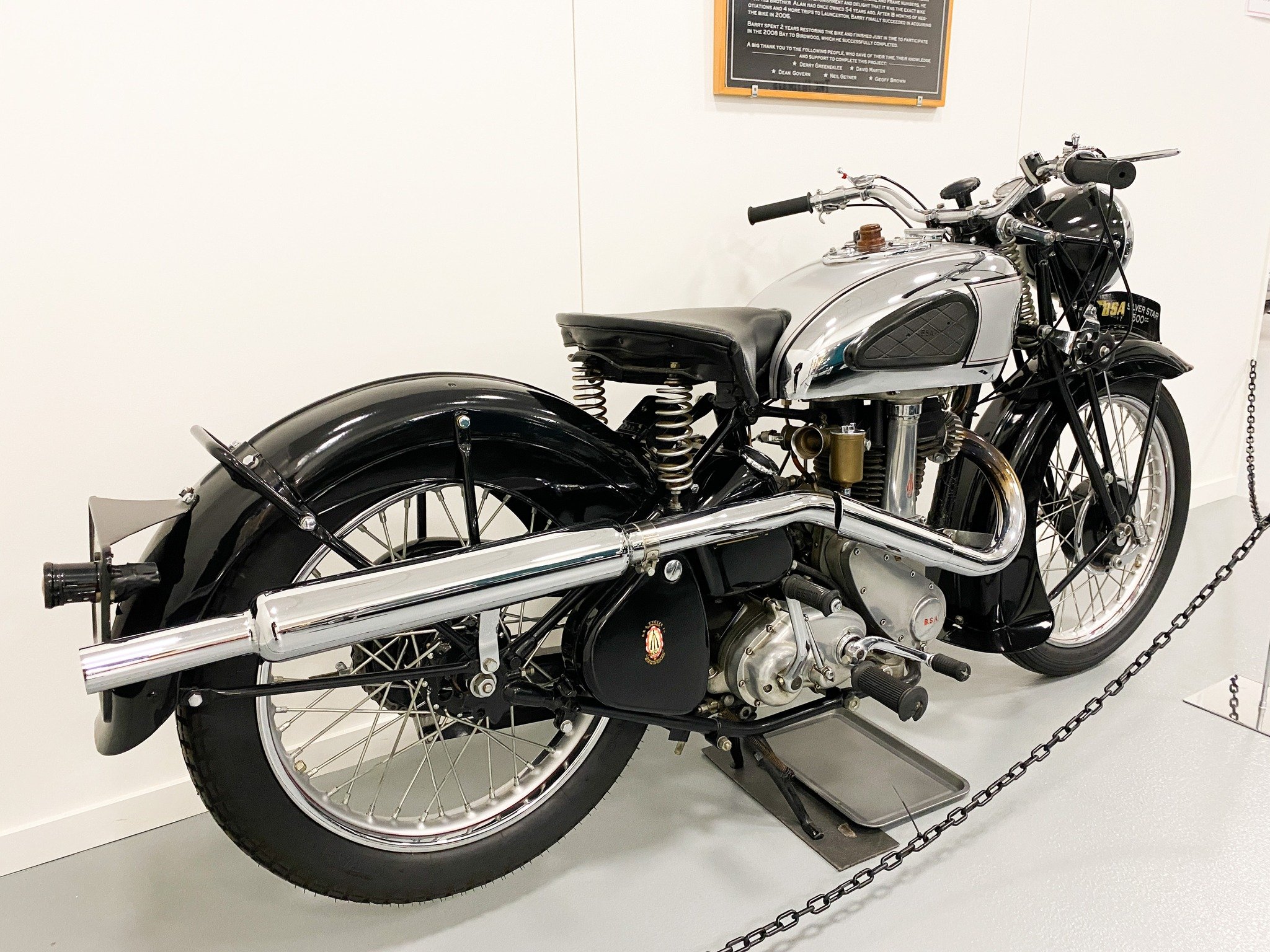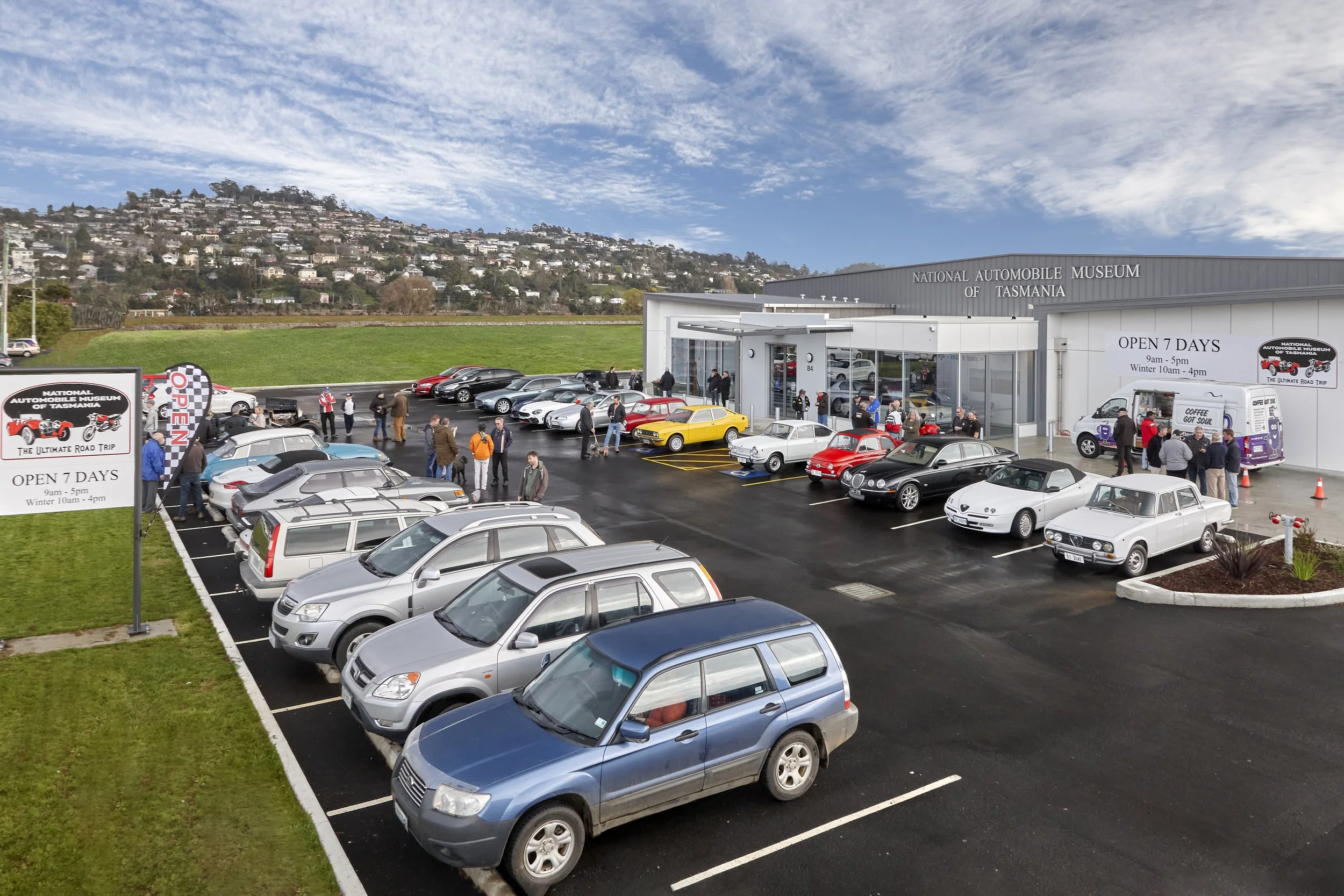
1939 BSA SILVER STAR
In 1939 the bike was exported to Australia. 1939 also marked the start of the Second World War, and as a result, Australia only received 45-50 of these Silver Stars. Those that did arrive were quickly recalled by The War Department for use in the war effort. In 1939, the bike was purchased new in Launceston by Tas Laws. In late 1939 the government began acquiring motorcycles to be used in the war effort. Tas Laws decided against this idea and promptly buried the bike in his backyard, wrapping it in heavily oiled canvas to preserve the metal. The bike remained buried until the end of the war, after which it was exhumed and found to be in remarkable condition, with only the exhaust pipes and muffler affected by rust, which Tas replaced with new parts. The bike was then used for daily means of transport by Tas until sometime in 1948 when it was sold to Les Whittle, a neighbour of Tas.
The bike was then used for daily means of transport by Tas until sometime in 1948 when it was sold to Les Whittle, a neighbour of Tas. The bike was again used for general purpose until sold to a very young 17 year old Alan Freeman. Alan’s family were friends with the Whittles and after many months of pestering by Alan, the bike became Alan’s, much to the delight of his younger brother Barry. Alan put the bike to good use in his work as a travelling salesman, but the relationship with this special machine was not to last, and on July 20, 1951, Alan whilst riding the bike collided with a truck and lost his life. after the accident the bike was placed in police storage for a period of almost 12 months. Barry, now 15 years old, used to visit the lockup to view the bike through its cage and reminisced of the the many times he had been with Alan on his country trips, riding pillion. After the release of the bike it was decided by the Freeman family to sell the bike, much to the disappointment of young Barry, who pleaded for one last ride before the sale.
The bike was sold for the third time in 1952 where it was used by the new owner for general use before being put ‘on loan’ for educational purposes at a tertiary college in Launceston. Over the years Barry’s career took him interstate and he finally settled on retirement in Adelaide. His love of motorcycles led him to restore numerous classic and vintage bikes, however he was always silently searching for his favourite, a 1939 BSA Silver Star, like the one Alan his brother had owned. On one of his trips to Launceston, in 2004, he asked a number of enthusiasts if they might be able to assist him in locating a ’39 Silver Star. One of those enthusiasts, Syd Woodfield, thought he might know of one and offered to ‘check it out’ and returned with a positive answer a few days later.
Meanwhile Barry had also had another response from a friend of the family and both contacts although completely seperate, led to the same bike. After a further two trips to Launceston, Barry succeeded in being able to view the bike, which was in fairly rough condition, hidden away in a shed, where it had stayed for almost ten years. At first glance, the bike looked vaguely familiar to Barry, but when sighting and confirming the engine and frame numbers, he realised to his absolute astonishment and delight that it was the exact bike that his brother Alan had once owned 45 years ago. After 18 months of negotiations and four more trips to Launceston, Barry finally succeeded in acquiring the bike in 2006. Barry spent two years restoring the bike and finished just in time to participate in the 2008 Bay to Birdwood, which he successfully completed.
ESTABLISHED IN 1987
For over 30 years the National Automobile Museum of Tasmania has been showcasing Tasmania’s and Australia’s finest classic cars and motorcycles. In this time the museum has gained a reputation as one of Australia’s finest Motor Museums.
